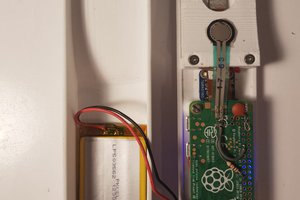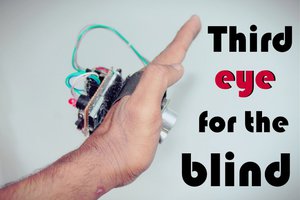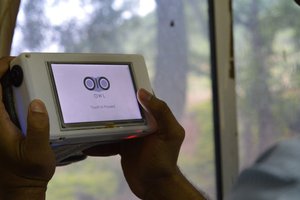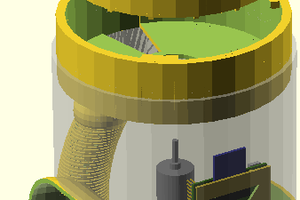I only have a rough idea for how to make this work.
It occurs to me that instead of the attempts Google has been making with Google Glasses, that a better idea would be full projection into the eyes. The main device would be a unit which sits on a persons nose with an arm extending to each side, but only about 3mm. On the end of each arm place a micro projector which emits an image directly into the pupal of the person wearing it. Being small size and going directly into the eye this would require the use of very little power as the light level would need kept low so as not to cause irritation. The result being it is just bright enough to be seen, also can be seen through the image while in use depending on what the user is focusing on.
The projector would stay focused on the pupil of the eye so the person could view it or look around and the view would stay focused on the persons point of view. A camera placed beside the projector monitoring the eye would allow for control of the device based off eye movement. This allows for an easy interface for users. When they eye is focusing on an object close up, reading for example, the eye dilates. When not focusing on the text the eye doesn't dilate as much. So if the camera notices an eye which has dilated and is moving around, it can conceive this as reading and adjust the content on screen accordingly. When the eye is not dilated it can be conceived as the user not focusing on the text, and would then instead scroll the page in the direction the persons eye moves. This would be basic navigation.
For clicking on a button or object a user would only need to focus on the object desired so as to make the eye dilate and then blink. The blink would be registered as a click.
To deactivate the onscreen view, a person could simply close their eyes for a few seconds, or by simply removing the device.Placing a sensor on the part which holds it on a persons nose which detects if it is worn or not would allow the device to easily know when to turn itself on or off.
As for the hardware running the device, a smart phone would with the proper software would be capable. The device located on the users nose would be built with very low power usage and use a small battery, but the main hardware couldn't be stored in the device without it becoming too heavy to rest on a users nose without addition support. Transmission of the data between the device and smart phone could be done by making use of a weak wifi signal running at below 2.4Ghz. This transmission distance would be limited to around 3 feet. This would help avoid interference from typical 802.11 signals, as well as interference from other users of the device in close proxemity.
 Michael Justin Sexton
Michael Justin Sexton



 Muhammed Azhar
Muhammed Azhar

 bsutton
bsutton
For the eye tracking, I think it will in the end be fairly simple. Take for example the technology used in as old a device as the Nintendo with its light gun. When playing a game with that, you pull the trigger and the screen flashes black while the targets flash white and by simply detecting white or black you hit the target.
My idea for the motion tracking of the eye is relatively similar, since the eye is a black dot in the center of a white area. If the software is programmed to simply follow the the black dot, and map it relative to the center of the eye it would allow for tracking. The center of the eye would be considered a neutral space and won't move the page if it is in this area. By slightly moving the eye in any direction it could then move the cursor on screen or scroll the page.
Clicking could be determined by either losing track of this black dot for a period between .4ms-2.9ms while a command to end the interface could be detected by keeping the eyes shut for a period of 3 seconds or longer. Right clicking could be done by closing only one eye and keeping the other eye open.
Sorry I would do a sketch but I am not so good at drawing. The image I have in mind for the device is pretty much looking like a small bar which is going to measure around 20mmx2mmx2mm which will cross from one eye over the nose and to the other eye, with the length needing a little work probably to make sure it fits for everyone. In the middle at the nose it would have additional hardware connected which will go up between the eyes and sort of hold onto the nose. The reason for this is to both help keep the device on but it will house the battery and wireless communication devices here as well as other needed hardware. The idea would be to keep it as small as possible so as to not make it stick out or go up too far.